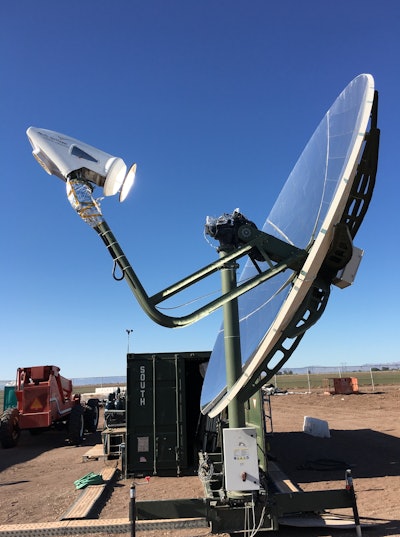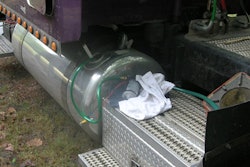
Southern California Gas Co. recently introduced a solar-powered hydrogen gas generator that could provide a big boost to California’s hydrogen infrastructure.
The Golden State has become a proving grounds of sorts for commercial hydrogen fuel cell technology. Toyota, U.S. Hybrid and Kenworth all have Class 8 fuel cell trucks hauling freight from Southern California ports. UPS has fuel cell delivery vans working at the state’s capital in Sacramento. Consumers in the nation’s most populated state continue to show interest in fuel cell cars, especially as more hydrogen stations emerge alongside government incentives.
SoCalGas partnered with the Pacific Northwest National Laboratory and the STARS corporation to create a generator that uses sunlight to convert natural gas into hydrogen while capturing carbon dioxide emissions.
Researchers have also found a use for the carbon rendered during hydrogen fuel production—carbon nanotubes, which are many times stronger than carbon fiber.
“We are always looking for innovative ways natural gas can be used to develop clean energy sources,” said Yuri Freedman, senior director of business development for SoCalGas. “Hydrogen is well positioned to play a vital role in California’s clean energy future through a broad range of applications, including the expanded use of fuel cells, long-term energy storage and other purposes.”
Hydrogen has many applications, including powering vehicles and homes, but unlike methane, it is not typically found on its own in nature so researchers have developed ways to produce it from other compounds. SoCalGas supports efforts to increase hydrogen production, particularly for use along “California’s Hydrogen Highway,” a series of hydrogen-fueling stations throughout the state.
Currently there are 35 hydrogen fueling stations in the state, with another 29 stations in development. Increasing this fueling infrastructure could help speed the deployment of zero emission hydrogen fuel cell vehicles which, according to the California Air Resources Board, significantly reduces greenhouse gas and smog emissions.
The solar thermochemical advanced reactor system (STARS) produces hydrogen through a thermochemical process where the sun provides thermal energy to break down natural gas and water into hydrogen and carbon dioxide in a process called steam methane reforming.
Hydrogen has been rejected by some environmentalists who say its production releases too much carbon into the atmosphere. However, SoCalGas reports that extensive testing shows that STARS can be configured to produce hydrogen and other chemicals without emitting any carbon.
Chemicals trap and use the carbon that would otherwise be emitted. The carbon then can be used to make chemicals that become resins and plastic materials.
For example, a separate SoCalGas research and development project is studying a unique use for carbon captured during hydrogen production, so-called carbon nanotubes (CNTs). CNTs have tensile strength and stiffness many times that of carbon fiber and are typically used in high-tech manufacturing.
STARS technology is undergoing field testing at San Diego State University’s Brawley campus where it runs on solar and renewable electricity. Demonstrations have shown an energy-to-chemical energy conversion efficiency above 70 percent, making it one of the world’s most efficient solar processes. Currently the system produces about 25 kg of hydrogen per day if operated around the clock using a combination of solar energy and renewable gas or electricity. This is the equivalent of 25 gallons of gasoline or diesel fuel. Research suggests the system could produce 100 kg of hydrogen per day with a more advanced design. Excited about the prospects of solar-produced hydrogen, PNNL created a new company centered around its advancement.
“STARS Corporation is a new, spin-off corporation, created for the purpose of commercializing this nascent technology,” said Robert Wegeng, a former technology developer at PNNL and the president of STARS Corporation. “We hope to have a commercial demonstration operating in one to two years.”
The STARS generation system has been in development by PNNL and the U.S. Department of Energy (DOE) for more than 10 years. SoCalGas is working with the DOE to make these systems commercially viable.








